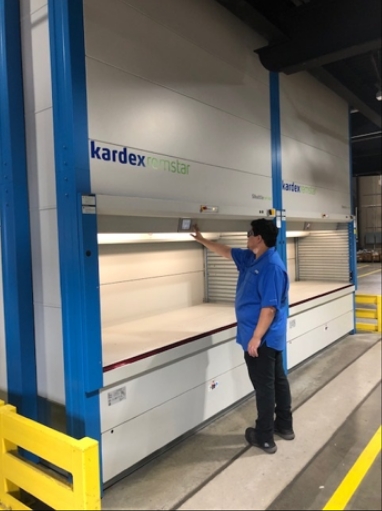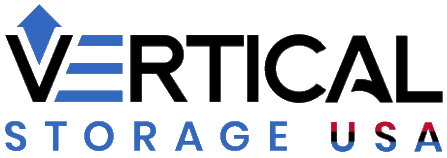Warehouse automation promises efficiency and productivity gains, but it’s not without its hurdles. At Vertical Storage USA, we’ve seen firsthand the complexities businesses face when implementing these advanced systems.
From substantial upfront costs to integration challenges, the road to automation is often paved with obstacles. This post explores the biggest challenges in warehouse automation and offers insights on how to navigate them successfully.
The True Cost of Warehouse Automation
Breaking Down the Costs
Warehouse automation requires a significant financial investment. For a mid-sized warehouse, costs can range from $1 million to $10 million (or more). This includes expenses for hardware (conveyor systems, automated guided vehicles, robotic arms), software (warehouse management systems, control systems), installation, and initial training.
A study by LogisticsIQ projects the warehouse automation market to reach $55 billion by 2030, growing at a CAGR of 15% between 2024 and 2030. This growth stems from the increasing need for efficiency in e-commerce fulfillment and rising labor costs.
ROI and Payback Periods
Despite substantial upfront costs, long-term benefits often justify the investment. Most businesses see a return on investment (ROI) within a few years, depending on the scale of automation and efficiency gains achieved.
A Honeywell case study demonstrated that after implementing an automated storage and retrieval system, a distribution center reduced labor costs by 20% and increased throughput by 25%. These improvements led to a payback period of just under three years.
Funding Strategies and Cost Justification
To overcome the initial cost barrier, businesses can explore several funding options:
- Phased Implementation: Automate high-impact areas first and reinvest savings into further automation.
- Leasing Options: Many providers offer leasing arrangements to spread costs over time.
- Government Grants: Some regions provide grants or tax incentives for investments in advanced manufacturing technologies.
- Vendor Financing: Some automation suppliers offer financing options, which can provide more flexibility than traditional bank loans.
When justifying costs to stakeholders, focus on both quantitative and qualitative benefits. Beyond labor savings and increased throughput, highlight improvements in accuracy, safety, and customer satisfaction.
Choosing the Right Solution
Selecting the appropriate automation solution requires careful analysis of your specific business needs. Companies must balance cost and benefit to find the optimal approach. Vertical Storage USA offers a range of automated storage and retrieval solutions, including Vertical Lift Modules (VLMs) and Goods-to-Person (G2P) robots, that can significantly enhance warehouse efficiency.
These solutions are space-saving, scalable, and can be tailored to suit diverse inventory profiles and throughput requirements.
Bridging the Gap: Integration Challenges
Tackling Legacy System Compatibility
The integration of new automated systems with existing warehouse infrastructure is often a major challenge. Gartner predicts that the next three to five years will see a surge in the adoption of digital supply chain technologies.
Companies must audit their current systems to uncover compatibility issues early on. Custom interfaces, middleware, or selective upgrades to legacy systems may be required to ensure smooth integration.
Empowering the Workforce
Automation success depends heavily on your people. A Deloitte study found that while 94% of executives believe reskilling is critical, only 19% feel ready to address it.
Comprehensive training programs, both technical and change management focused, are key. Vertical Storage USA and its partners assist with onboarding and training to make the transition smooth for teams.
The Power of Phased Implementation
Trying to automate everything at once is rarely practical. A phased approach allows for gradual integration, providing time to adjust and measure results.
Start with high-impact, low-risk areas, such as implementing a VLM for fast-moving items or adding G2P robots for your picking process. Vertical Storage USA’s modular systems are perfect for staged rollouts.
Customization and Flexibility
No two warehouses are the same. Off-the-shelf solutions don’t always fit. Automation systems must be tailored to each facility’s footprint, SKU diversity, and operational goals.
Vertical Lift Modules can be installed in custom heights and configurations. G2P robots can adapt to changing layouts and scale up or down based on seasonal demand.
Tailoring Automation for Your Unique Warehouse
Complex Layouts and Limited Space
Modular solutions like VLMs are ideal for facilities with irregular layouts. They save up to 85% of floor space by maximizing vertical storage.
Product Variability
For operations managing a wide range of SKUs, G2P systems bring products directly to operators, reducing walk time and boosting pick accuracy.
Seasonal Peaks
Mobile robotics and flexible storage systems help manage seasonal surges without overcommitting to permanent labor or infrastructure.
Choosing a Scalable Partner
The right partner makes all the difference. Vertical Storage USA stands out for our ability to design custom solutions that grow with your business. We specialize in scalable, ROI-driven systems that minimize disruption and maximize performance.
Final Thoughts
Warehouse automation presents real challenges, but also enormous opportunities. From upfront costs to integration headaches, these hurdles are manageable with a strategic, step-by-step approach.
At Vertical Storage USA, we’re here to guide you through it. Our VLMs and G2P robots are proven tools that simplify automation, save space, and boost throughput. Let us help you turn challenges into growth opportunities.



